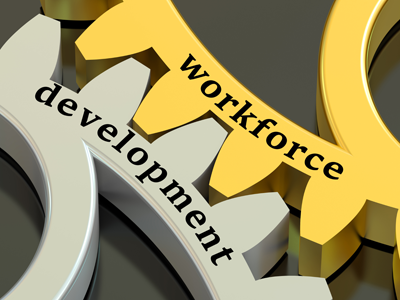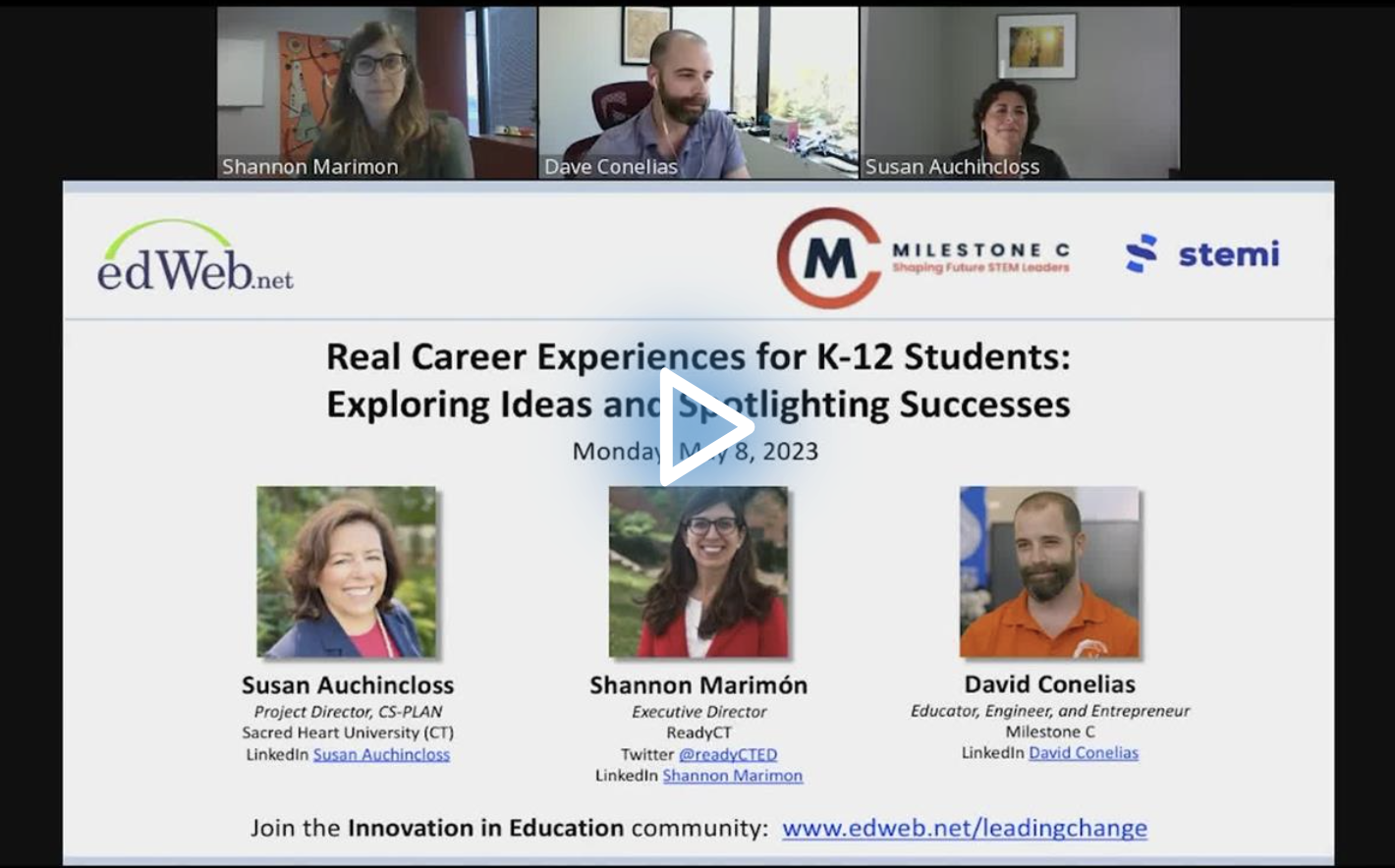Educating Students for the New Industrial Revolution
Watch the Recording Listen to the Podcast
A common refrain of 21st century education is that teachers are educating students today for jobs that don’t even exist yet. But while schools may not be able to prepare students for an exact occupation, they can give them the skills they need to succeed beyond high school.
During the edLeader Panel, “Real Career Experiences for K-12 Students: Exploring Ideas and Spotlighting Successes,” Susan Auchincloss, Project Director of CS-PLAN at Sacred Heart University, Shannon Marimon, Executive Director of ReadyCT, and David Conelias, Educator, Engineer, and Founder and CEO of Milestone C, discussed the key components of career pathway initiatives and reasons why they are essential K-12 programs.
Tech savviness required
Technology skills will be the foundation of most future jobs. However, even though students may be digital natives, that doesn’t make them experts. Schools need to work with local businesses to determine what skills students need and develop programs to train them.
Teach both digital literacy and computer science
Digital literacy is understanding how to use technology, but students who learn computer science learn what’s happening behind the screen. Students need both skills in order to compete for future careers. Coding for a day or week isn’t enough—computer science should be treated as a core subject.
Start students young
In addition, schools should not wait until high school to offer comprehensive digital literacy or computer science classes. Districts need a K-12 pathway for technology skills, just like they do for English, if they want to prepare students for the next stages. Ultimately, the goal is to create lifelong learners who continue to contribute to their industry.
Train the trainers
Of course, if schools expect students to have a computer science pathway, then the teachers need additional training. This needs to be especially strong for elementary teachers who tend to teach all subjects and might not have much exposure to teaching technology skills.
Let the business community help lead the way
Since the schools are training students to be a part of the workforce, it makes sense to include them in helping plan the curriculum and even take on some of the training. This could be internships and mentorships, but students could also work on projects for local businesses as part of the schoolwork.
Let students see the impact of tech projects in the real world
Ask community partners to go beyond simple mentorships and have the students work on actual projects with implications for their business. This could be something as simple as contributing new content to an app to developing a new interactive map for a hospital. The goals are to give students a sense of accomplishment and to teach them how to interact in a professional setting.
Don’t forget about the career-connected skills
Finally, in addition to understanding and working with technology, students need to know how to operate in the workplace. This includes not just knowing how to interact in a work environment, but also what’s required to continue growing in the career.
Challenges
Of course, adding a focus on computer science and career preparedness brings challenges. First, schools and teachers already feel overburdened by everything they’re trying to do for students now, and with the increased focus on SEL, teachers don’t feel like they have any more time.
Second, educational systems are set up to focus on core academics rather than career prep. Changing the goal would be a complete change in mindset. Moreover, educational systems are slow to change, and while these changes are necessary now, they will take time. But according to Auchincloss, schools need to start making changes now, because, “We are in a new industrial revolution.”
Learn more about this edWeb broadcast, “Real Career Experiences for K-12 Students: Exploring Ideas and Spotlighting Successes,” sponsored by Milestone C and Stemi.
Watch the Recording Listen to the Podcast
Join the Community
Innovation in Education is a professional learning community that brings together teachers, administrators, researchers, and policy-makers to foster collaboration in improving education.
STEMwave is an initiative developed by Milestone C and STEMI to connect education and industry through Edtech companies. It aims to transform schools into Schools of the Future and prepare students for the workforce of the 21st century. STEMwave offers career-connected STEM programs using a deep learning platform based on a NonLinear Learning philosophy. The program encourages critical thinking, collaboration, and confidence building, and expands students’ foundations for informed career decision-making. The partnership has recently expanded to include Infobip, a market leader in AI technology, in the promotion of their latest program, AI-Driven Communication (AIC). STEMwave brings industry technology into Edtech programs and seamlessly integrates them into schools to ensure preparedness for the real-life challenges, applications, technology, and processes that students will encounter in their future careers.
Blog post by Stacey Pusey, based on this edLeader Panel







Comments are closed.